A false start…

There are many plug-in cars in our endurance test garage, so a large station wagon with a petrol engine is an interesting exception. We introduce the Volkswagen Passat to you. What is it like as a travel car? Because the large station wagon with 1.5 eTSI has already completed two trips abroad.
The Passat has been a fixture in Volkswagen’s program for more than 50 years. The Passat Variant in particular has always sold well, with a space offering that never disappointed. The D-segment in which he operates has virtually disappeared in 2024. Buyers clearly prefer a size smaller or a higher SUV. While the previous generation of Passat still competed with the Ford Mondeo, Opel Insignia, Renault Talisman or Toyota Avensis, the competition for this generation is significantly smaller. The models mentioned have all been deleted. The new Skoda Superb is its biggest rival and that is its twin brother. In the near future we will have the 4.92 meter long Passat at our disposal and we will find out whether it is completely contemporary or whether its heyday is definitely a thing of the past.

Endurance test Passat is a mild-hybrid 1.5 eTSI
The new Passat is currently available with two powertrains. A plug-in hybrid in two power variants and a mild-hybrid 1.5 eTSI. This 1.5-liter four-cylinder turbo engine with variable turbine geometry and cylinder deactivation is linked to a seven-speed DSG dual-clutch automatic transmission. It delivers 150 hp and 250 Nm at 1,500 to 3,500 rpm. We received an R-Line Business, which was also supplemented with almost all options. Although there are not that many, the price increases from €56,990 to approximately €64,000.
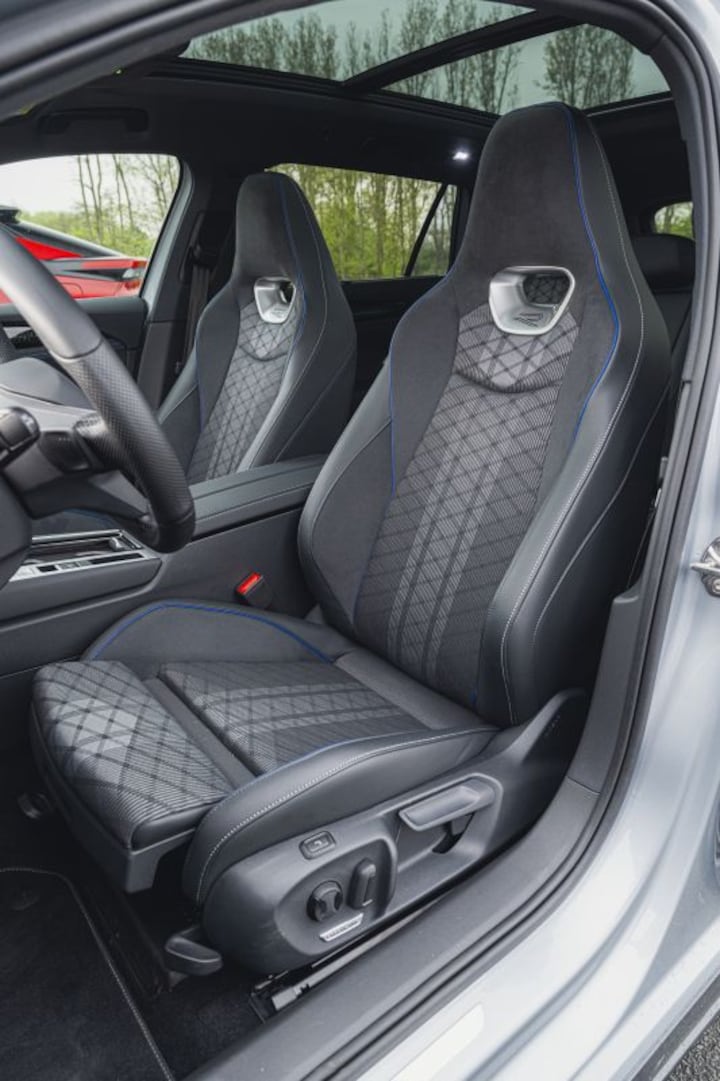
Logically, we don’t have much to complain about the equipment. We sit in bucket seats with fixed headrests, we have a panoramic roof, parking heater, a multimedia system with a large screen, seat heating all the way to the back seat and mood lighting in dozens of colors. But also a head-up display, all driver assistance systems and a cover screen on the luggage compartment that rolls up and down electrically.
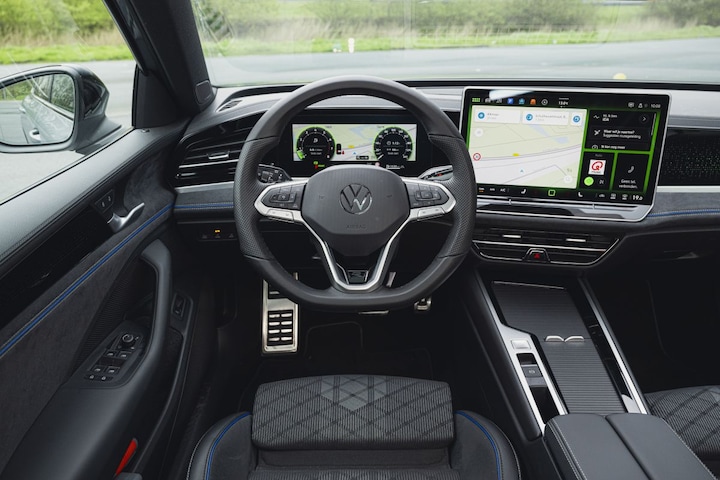
Passat will soon be next to Mercedes C180 Estate
In the coming months, this Passat will of course be included in a comparative test, although the search for competitors is indeed difficult. But we have a great candidate in the starting blocks: the Mercedes-Benz C-class Estate. We will also compare it with our own competition: the new Tiguan, because that is a typical car that has sucked the D-segment dry. In addition, we fervently hope that the electric ID.7 Tourer will arrive in the country in time for a direct duel. We mainly travel with the VW a lot, because it seems perfect for that. In fact, we will do that immediately.
False start due to coolant message
Unfortunately we are experiencing a false start. Because after half an hour and only 50 kilometers an urgent warning sounds from the dashboard: ‘check engine coolant level’. We immediately stop and open the hood. Indeed, the coolant is below the minimum level. That cannot be the intention. Fortunately, we are a stone’s throw from Volkswagen dealer A-point in Amsterdam, which immediately makes a bridge and mechanic available for an inspection. The technician on duty does not find a leak, he suspects that there was an air bubble in the system. Liquid is added and a little later we are on our way again.
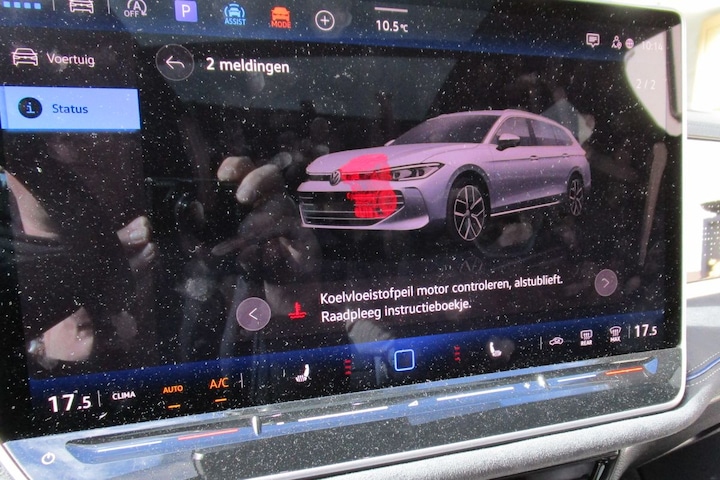
Volkswagen Passat
The predicted range with a full fuel tank is more than 1,000 km. These are values that we hardly see today, and ‘in the past’ mainly saw with diesels. The first destination is Austria, where we hope for a weekend of snow fun. Our Passat is therefore equipped with winter tires.

A sidewalk full of luggage in the most diverse shapes and sizes disappears effortlessly into the luggage compartment. The ski hatch opens for a set of skis and soon the luggage compartment is filled to the roof. There is 690 liters under the cover and a lot more can be added without a cover. The traveling group consists of four adults and the two sitting in the back seat also have plenty of space. No knees against front seats, no raised legs; where else do you come across that? You can unfold the morning newspaper without any problems. And for those who don’t like paper media: there are two USB-C charging ports for the rear passengers, and a 230V socket in the luggage compartment.
You don’t buy the 1.5 eTSI for its speed
The kilometers and hours pass by almost unnoticed. The 1.5 is rarely heard, and that is not a problem, because the sound is a bit loveless. It sounds a bit tinny and not very special. The Passat has no trouble driving briskly on the German autobahn, but when fully loaded you notice that the 150 hp are certainly not generous. The intermediate sprints are a bit sticky, even without packing. The PHEVs undoubtedly perform better, because the electric motor can act as a booster. You don’t buy the 1.5 eTSI for its speed.
You drive to the Alps on one tank and the Passat proves to be economical in nature. Because even when driving briskly when fully loaded (130 to 150 km/h on the autobahn), the consumption remains close to 1 in 14. In later tests we want to determine the consumption more accurately.
Tired front seat passengers can take advantage of the seat massage. It can be quite intense if desired. With many cars this is more of a well-intentioned gimmick than a serious massage, but that is definitely different with this Passat. As if someone is actually working with firm hands on your back.
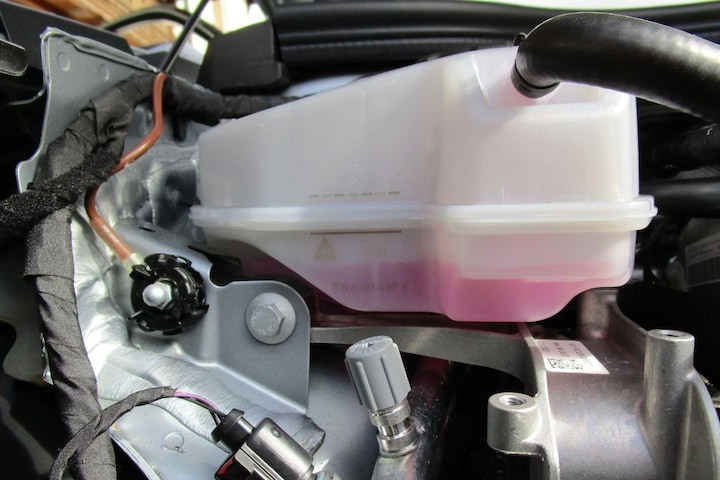
Oops, below the minimum level!
Still leaking, no air bubble
A day after arrival, the Passat warns us again that the coolant level is too low. Inspection of the engine compartment confirms that the level has indeed dropped again. We immediately set sail for an Austrian Volkswagen dealer. He usually has no technical staff in-house on Saturdays, but he sends the one mechanic who is working on his own car straight to our VW. He uses a flashlight to look for any leaks and refills. He advises to have the car checked again when he gets home, because the story about the air bubble is unbelievable as far as he is concerned, although he also finds no leakage.
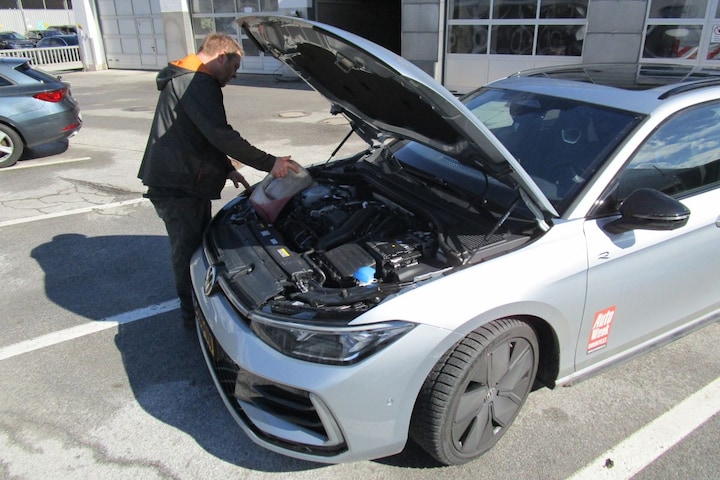
On mountain roads you notice that the Passat lacks some power, because every now and then the engine makes itself loudly heard. Some more torque and power would be welcome. But the loss should not spoil the fun, because the Volkswagen has fine and precise steering and is simply good and stable on the road. Taking a mountain pass is definitely an enjoyable activity. At least for the driver…
After returning home, we immediately return our station wagon to the importer for an inspection and later that day we have it back in our possession. It appears that there is indeed a leak. An incorrectly attached clamp is the cause of unwanted coolant loss. The problem was quickly resolved and did not occur again afterwards.
The first impression left by the Passat endurance tester is mainly good. We are currently recording the problems with the cooling system as an incident, and we especially praise it for its comfort and space. Engine-wise, we would like a little more torque and power, but we are satisfied with the favorable consumption of the 1.5 eTSI.

The Volkswagen Passat in W0lfsburg.
Consumption of the Volkswagen Passat
By driving to Austria fully packed and the drive to Wolfsburg, the consumption over the first 6,500 kilometers is 1 in 15. During normal journeys in the Netherlands, on winter tires it was close to 1 in 17, on summer tires we already see it drop to over that value.
What’s coming?
After the first drive to Austria we took the Passat to Wolfsburg for a visit to Volkswagen Classic in Wolfsburg. During that trip with two people on board, we could travel back and forth from the west of the Netherlands on just one tank of gasoline. The consumption included stretches of the autobahn where the speed sometimes exceeded 200 km/h, with 226 on the clock as the highest speed. On the way back we had a lot of traffic jams. Because we also made a photo session on location of the endurance tester and the first Passat Variant from 1974, we think the consumption over the entire trip was very reasonable: 1 in 15.1! We will soon publish the New Year’s Eve of the first and the newest Passat in the magazine. And we have previously presented the comparison test with the Mercedes C-class to you as a video. The Passat does that trick on summer tires, the Pirelli Sotto Zero-winter tires have been exchanged for Good Year Eagle F1‘s.
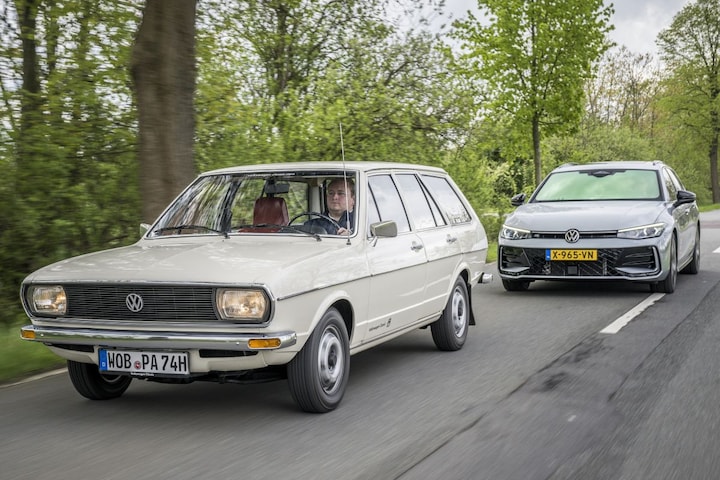
The first Volkswagen Passat Variant and the newest.
– Thanks for information from Autoweek.nl